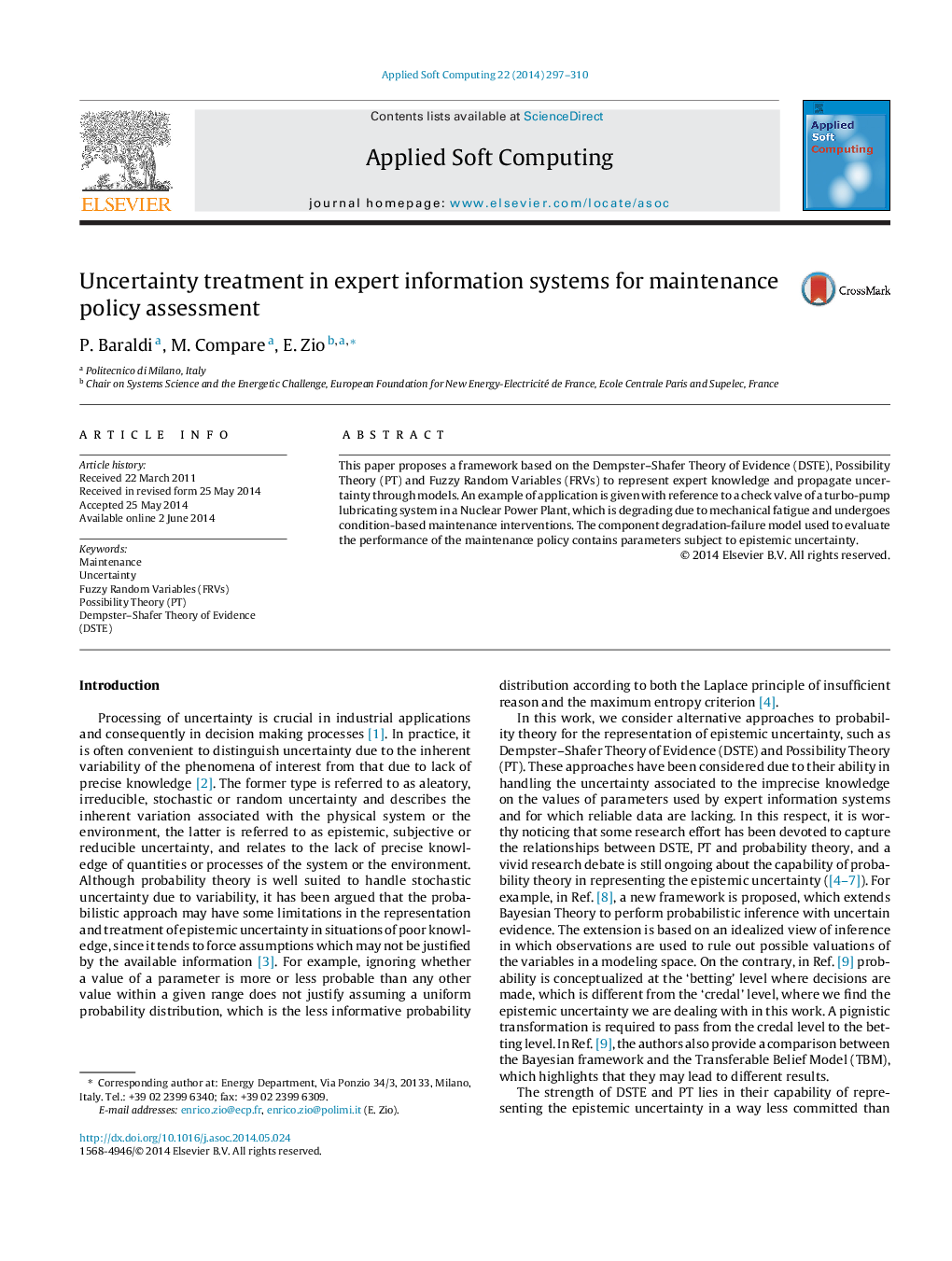| Article ID | Journal | Published Year | Pages | File Type |
|---|---|---|---|---|
| 495354 | Applied Soft Computing | 2014 | 14 Pages |
•We know the stochastic model of the degradation process affecting a component.•Its parameters are poorly known, and only via expert judgment.•We use possibility distributions to represent the information retrieved.•We develop a method based on Dempster–Shafer Theory of Evidence and Fuzzy Random Variables to propagate the uncertainty.•The method provides the plausibility and belief distributions of these indicators.
This paper proposes a framework based on the Dempster–Shafer Theory of Evidence (DSTE), Possibility Theory (PT) and Fuzzy Random Variables (FRVs) to represent expert knowledge and propagate uncertainty through models. An example of application is given with reference to a check valve of a turbo-pump lubricating system in a Nuclear Power Plant, which is degrading due to mechanical fatigue and undergoes condition-based maintenance interventions. The component degradation-failure model used to evaluate the performance of the maintenance policy contains parameters subject to epistemic uncertainty.
Graphical abstractFigure optionsDownload full-size imageDownload as PowerPoint slide
